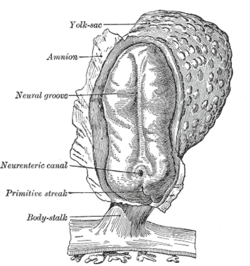Schizotypal Personality Disorderit is a condition characterized by acute discomfort with, and reduced capacity for, close relationships as well as by cognitive or perceptual distortions and eccentricities of behavior. This disorder is only diagnosed when these behaviors become persistent and very disabling or distressing. This disorder should not be diagnosed if the distrust and suspiciousness occurs exclusively during the course of Schizophrenia, a Mood Disorder With Psychotic Features, or another Psychotic Disorder or if it is due to the direct physiological effects of a neurological (e.g., temporal lobe epilepsy) or other general medical condition.
- A disorder characterized by eccentric behaviour and anomalies of thinking and affect which resemble those seen in schizophrenia, though no definite and characteristic schizophrenic anomalies have occurred at any stage. There is no dominant or typical disturbance, but any of the following may be present:
-
- - Inappropriate or constricted affect (the individual appears cold and aloof);
- - Behaviour or appearance that is odd, eccentric, or peculiar;
- - Poor rapport with others and a tendency to social withdrawal;
- - Odd beliefs or magical thinking, influencing behaviour and inconsistent with subcultural norms;
- - Suspiciousness or paranoid ideas;
- - Obsessive ruminations without inner resistance, often with dysmorphophobic, sexual or aggressive contents;
- - Unusual perceptual experiences including somatosensory (bodily) or other illusions, depersonalization or derealization;
- - Vague, circumstantial, metaphorical, overelaborate, or stereotyped thinking, manifested by odd speech or in other ways, without gross incoherence;
- - Occasional transient quasi-psychotic episodes with intense illusions, auditory or other hallucinations, and delusion-like ideas, usually occurring without external provocation.
TREATMENTAs with most personality disorders, schizotypal personality disorder is best treated with some form of psychotherapy. Individuals with this disorder usually distort reality more so than someone with Schizoid Personality Disorder.
Psychotherapy
As with Delusional Disorder and Paranoid Personality Disorder, the clinician must exercise care in therapy to not directly challenge delusional or inappropriate thoughts. A warm, supportive, and client-centered environment should be established with initial rapport. As with Avoidant Personality Disorder, the individual lacks an adequate social support system and usually avoids most social interactions because of extreme social anxiety. The patient often reports feelings of being "different" and not "fitting in" with others easily, usually because of their magical or delusion thinking. There is no simple solution to this problem. Social skills training and other behavioral approaches which emphasize the learning of the basics of social relationships and social interactions may be beneficial.
While individual therapy is the preferred modality at the onset of therapy, it may be appropriate to consider group therapy as the client progresses. Such a group should be for this specific disorder, though, which may be difficult to form or find in smaller communities.
Building a trusting relationship with a therapist may help people with schizotypal personality disorder begin to trust other interpersonal relationships.
Treatment can be more effective when family members are involved. Seeking professional counseling as a group may help reduce fighting or emotional distance in the home. Family therapy may also offer the affected person a support structure and a boost in morale.
Cognitive therapy. This type of therapy can help people with schizotypal personality disorder identify and change distorted thought patterns. For example, this type of therapy may help a person with schizotypal personality disorder uncover — and change — confused ideas about what goes on in interpersonal exchanges.
Other treatments, such as group therapy and social skills training, can help you to manage symptoms. Family therapy may also help.
Counseling is often beneficial for people with schizotypal personality disorder. Counseling sessions focus on helping you gain insight into your personality disorder and changing your behavior.
Self-help
There are not any self-help support groups or communities that we are aware of that would be conducive to someone suffering from this disorder. Such approaches would likely not be very effective because a person with this disorder is likely to be mistrustful and suspicious of others and their motivations, making group help and dynamics unlikely and possibly harmful.
Medication
There's no specific drug treatment for schizotypal personality disorder. However, doctors may prescribe antidepressant or antipsychotic medications to help relieve associated conditions, such as anxiety, depression or other mood disorders. For example, prescription medications such as risperidone (Risperdal) and olanzapine (Zyprexa) may help reduce distorted thinking.
Currently there is no medication available specifically for this condition. You may be prescribed an antipsychotic drug called pimozide (Orap) to treat distorted thinking. Other drugs that may be used include risperidone (Risperdal) , haloperidol (Haldol) , and olanzapine (Zyprexa).
Comorbidity
When we say comorbidity, it is either the presence of one or more disorders (or diseases) in addition to a primary disease or disorder, or the effect of such additional disorders or diseases.
In response to stress, individuals with this disorder may experience very brief psychotic episodes (lasting minutes to hours). If the psychotic episode lasts longer, this disorder may actually develop into Brief Psychotic Disorder, Schizophreniform Disorder, Delusional Disorder or Schizophrenia. Individuals with this disorder are at increased risk for Major Depressive Disorder. Other Personality Disorders (especially Schizoid, Paranoid, Avoidant, and Borderline) often co-occur with this disorder.
Reference:
http://www.mayoclinic.com/health/schizotypal-personality-disorder/DS00830/DSECTION=treatments-and-drugs
http://www.thirdage.com/hc/c/schizotypal-personality-disorder-treatment
http://psychcentral.com/disorders/sx33t.htm
http://www.mentalhealth.com/dis/p20-pe03.html
http://en.wikipedia.org/wiki/Comorbidity


